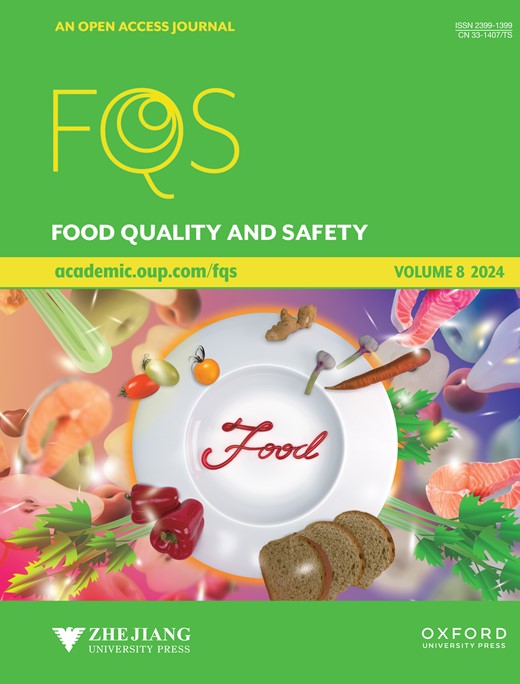Differentiation of the qualified tea beverages from the spoiled ones by the LC-MS based analysis of their polycarboxylic acids
IF 3
3区 农林科学
Q2 FOOD SCIENCE & TECHNOLOGY
引用次数: 0
Abstract
Polycarboxylic acids (PACs) are important metabolic products in almost all living bodies, yet current analytical methods for PACs detection in tea beverages are still unsatisfactory due to their complex matrix and physicochemical properties of PACs. In this work, a rapid method has been developed for the simultaneous determination of 7 PACs, including tartaric acid, α-ketoglutaric acid, malic acid, malonic acid, cis-aconitic acid, succinic acid and fumaric acid, in beverages, based on selective removal of the matrix in combination with liquid chromatography-mass spectrometry (LC-MS) analysis. By stirring with activated carbon and the Na2CO3 solution, the matrix in beverages was selectively removed, and PACs were almost retained in the supernatant of diluted Na2CO3 solution. Under optimized parameters, the limit of quantitation for the PACs was in the range of 1-50 ng/mL, and the content of the PACs in 8 beverages was determined with the recovery range of 72.2–122.5%. The content of malic acid, malonic acid, and succinic acid in tea beverages was found to be more than that in non-tea beverages, respectively. Moreover, the concentration of these PACs in beverages was found to be multiplied many times in their deterioration period, especially for fumaric acid and α-ketoglutaric acid. These results indicated that PACs can be selected as a criterion to differentiate the qualified tea beverages from the spoiled ones.用液相色谱-质谱法鉴别合格茶饮料与变质茶饮料的多羧酸含量
聚羧酸是几乎所有生物体中重要的代谢产物,但由于其复杂的基质和理化性质,目前检测茶饮料中聚羧酸的分析方法仍不令人满意。本工作开发了一种快速测定饮料中酒石酸、α-酮戊二酸、苹果酸、丙二酸、顺乌头酸、琥珀酸和富马酸等7种PAC的方法,该方法基于选择性去除基质,结合液相色谱-质谱(LC-MS)分析。通过与活性炭和Na2CO3溶液搅拌,饮料中的基质被选择性地去除,并且PAC几乎保留在稀释的Na2CO3水溶液的上清液中。在优化的参数下,PAC的定量限在1-50 ng/mL范围内,测定了8种饮料中PAC的含量,回收率在72.2–122.5%之间。茶饮料中苹果酸、丙二酸和琥珀酸的含量分别高于非茶饮料。此外,发现这些PAC在饮料中的浓度在其变质期会成倍增加,尤其是富马酸和α-酮戊二酸。这些结果表明,PAC可以作为区分合格茶饮料和变质茶饮料的标准。
本文章由计算机程序翻译,如有差异,请以英文原文为准。
求助全文
约1分钟内获得全文
求助全文
来源期刊

Food Quality and Safety
FOOD SCIENCE & TECHNOLOGY-
CiteScore
7.20
自引率
1.80%
发文量
31
审稿时长
5 weeks
期刊介绍:
Food quality and safety are the main targets of investigation in food production. Therefore, reliable paths to detect, identify, quantify, characterize and monitor quality and safety issues occurring in food are of great interest.
Food Quality and Safety is an open access, international, peer-reviewed journal providing a platform to highlight emerging and innovative science and technology in the agro-food field, publishing up-to-date research in the areas of food quality and safety, food nutrition and human health. It promotes food and health equity which will consequently promote public health and combat diseases.
The journal is an effective channel of communication between food scientists, nutritionists, public health professionals, food producers, food marketers, policy makers, governmental and non-governmental agencies, and others concerned with the food safety, nutrition and public health dimensions.
The journal accepts original research articles, review papers, technical reports, case studies, conference reports, and book reviews articles.
 求助内容:
求助内容: 应助结果提醒方式:
应助结果提醒方式:


